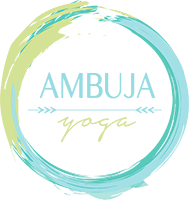I’ve been deep diving into living a healthier and more vibrant life. My desire to live the best life possible led me to Cate Stillman’s Body Thrive course. The course is fully rooted in healthy habits and Ayurvedic principles. I’ve been feeling so great, that I committed to doing her twelve month Yoga Health Coaching course (I’m in month one as of May 2018)! This little blog post is simply meant to be an intro to Ayurveda, an Ayurveda 101 if you will. 😉
Ayurveda 101: What is Ayurveda?
Ayurveda is an ancient science that originated during the Vedic era in India, thousands of years ago. When one looks at the Sanskrit roots of the word Ayurveda we see Ayu = life and Veda = science or knowledge, so Ayurveda is literally the science of life. Ayurveda is not just a way to cure disease, it is also a way of life.
Following an Ayurvedic lifestyle leads to overall health, improved immune system function, weight loss/weight maintenance, lowered risk of disease and improved energy.
Ayurveda 101: Ayurveda and Your Whole Being
Ayurvedic practitioners take into account the person’s entire being: physical, mental and spiritual. They assess diet, lifestyle, daily habits, imbalances and instances of dis-ease. Ayurvedic practitioners look at your prakriti (or constitution) and your vikruti (current state of imbalance) and work on bringing the patient back into balance by balancing the doshas.
The Ayurvedic College defines “a person’s prakriti [as] the inherent balance of the three doshas at the moment of their creation.” To know a person’s constitution is to know their tendencies. And to know your own prakriti is a way to step into your own power and live a vibrant, healthy dis-ease free life.
Your prakriti, or constitution, is determined by the balance (or imbalance) of your doshas. It is common to have one or two dominant doshas. The three doshas are vata, pitta, and kapha. Each of the doshas has very specific tendencies and are identified by different characteristics of body type, energy, digestion, personality and so much more. Want to find out your dosha? I like the Banyan Botanicals quiz (although they do try to sell you their products). Here is a link to the Banyan Botanicals dosha quiz. I’m Kapha-Pitta, and almost NO VATA!!! I’ve been working on balancing my own doshas and it’s been a fun experiment in self-care.
Your vikruti is your current state of imbalance and is not static. Your vikruti changes at different times of day, seasonally, your stage of life and with lifestyle changes. Would you like to determine your vikruti? Here is a short worksheet from the Ayurveda Institute that you can take.
Once you’ve discovered your prakriti and vikruti, and therefore your dominant dosha(s), you can begin to make lifestyle changes to balance your doshas and thrive. Three easy ways to balance your doshas are to eat a diet to pacify your dominant dosha(s), establish a dinacharya practice, and align your lifestyle with the ayurvedic clock.
Ayurveda 101: Ayurvedic Diet
In Ayurveda they have broken down our tastes into six dominant tastes: sweet, sour, salty, pungent, bitter and astringent. Certain tastes increase or decrease the qualities of each dosha.
For example, pitta types typically tend toward hot and oily need to eat foods that are cooling and drying to balance the firey qualities of pitta. They do well with smoothies, fresh and raw foods and should avoid garlic and heating spices. Spicy foods can aggravate pitta and bring it out of balance. Salty, sour, and pungent foods increase pitta, while sweet, bitter and astringent foods pacify pitta.
Kapha types who tend toward heaviness will do best with astringent, bitter and pungent foods, while vata types who tend to be light and airy need foods that are warm, rich, and heavy or foods that are characterized by sweet, salty and sour.
You can see here that the Ayurvedic diet is one way to find balance and overall health. Quote by Hippocrates: “Let food be thy medicine and medicine be thy food.”
I love these two Ayurveda cookbooks and use them weekly:
- Ayurveda Cooking for Beginners: An Ayurvedic Cookbook to Balance and Heal by Laura Plumb
-
The Everyday Ayurveda Cookbook: A Seasonal Guide to Eating and Living Well by Kate O’Donnell
When I started incorporating more Ayurvedic foods into my diet my digestion improved and I’ve felt lighter and healthier. It’s been an easy transition (probably because the recipes in Laura and Kate’s books are amazing) and I try to incorporate a few dosha specific meals into my weekly meal plans.
Ayurveda 101: Dinacharya
Another way to balance your doshas is to establish a dinacharya practice. Dinacharya is a daily routine, specifically a morning routine. The Ayurvedic morning routine begins with rising before the sun and involves a handful of self-care practices. For most of us, we don’t have hours to dedicate to our morning practice, but I’ve found it pretty easy to streamline.
For example, I wake early, sit upright in bed and meditate for a few minutes, I get up and scrape my tongue and brush my teeth, evacuate my bowls, hydrate, walk the dogs, and then hop in the shower. After my shower, I use a little oil to massage my body and joints and then I’m ready to go.
Do I do all of the dinacharya practices? No, but I have it down to a habitual flow and it works wonders. The trick with waking early begins with eating an early dinner and going to bed at a decent time the night before. The beauty of following Ayurvedic practices is that we immediately tune in and honor our body’s natural rhythms.
Ayurveda 101: Aligning With The Ayurvedic Clock and Your Physiology
Our 24-hour clock and the doshas are also aligned: certain times of day align with certain doshas, which means that certain tasks are better done at certain times of the day. Here is a simple breakdown of the Ayurvedic clock:
- 10 pm to 2 am Pitta
- From 10pm-2am it is possible to get a second wind, want to snack, etc. It’s best to head to bed before 10 pm, so that your second wind doesn’t keep you up later than you intended. This is also the time of organ healing and restoration, so it is best to skip that midnight snack.
- 2 am to 6 am Vata
- This is the time where energy is most fluid. This is also the time when many people need to get up for a late night bathroom break. It is best to wake up and start your day before 6 am. This time of day is also characterized by active dreaming and is a time of expansion and awe.
- 6 am-10 am Kapha
- The morning hours between 6 am and 10 am are characterized by a steady energy and it is the best time of day to get your daily exercise in.
- 10 am-2 pm Pitta
- Digestive fire is the strongest during this time, so it’s recommended to eat your largest meal of the day between 10am and 2pm. This is also the time of greatest productivity.
- 2 pm-6 pm Vata
- This is the time to work on projects or do seated tasks and it’s a good time to tackle problems as you may feel both alert and creative. It’s best to eat dinner before 6 pm to allow for proper digestion before bed.
- 6 pm-10 pm Kapha
- This is a time of slowing down. It’s a great time to spend with friends and family or to get your daily exercise in.
The amazing thing that happened to me was that my energy improved. I’ve had more energy to do the things I want to do. I’m also more in tune with my body and its needs. Do I need to rest? Do I need to eat? What foods make me feel good and what foods make me feel “blah”. I love it!
Over the next few months I will work on sharing more info about Ayurveda, changing your habits and living a healthier life, so if you have questions please ask!
So many blessings to all of you!
Love and Light,
Autumn
*Some of the links above are affiliate links, meaning, at no additional cost to you, I earn a small commission if you click through and make a purchase. These earnings help make the maintenance of this blog possible. You can rest assured that I only link to products I know and love.

 Ambuja Yoga
Ambuja Yoga 







